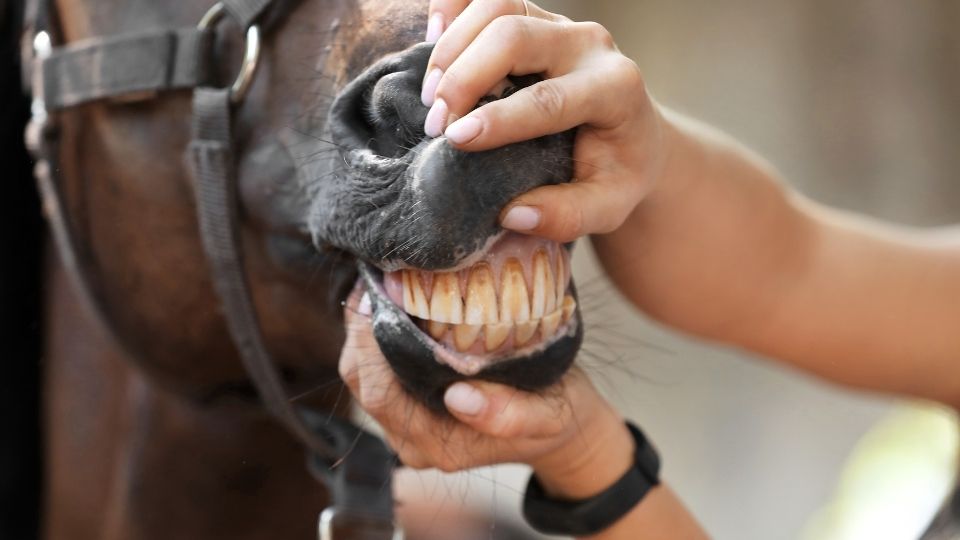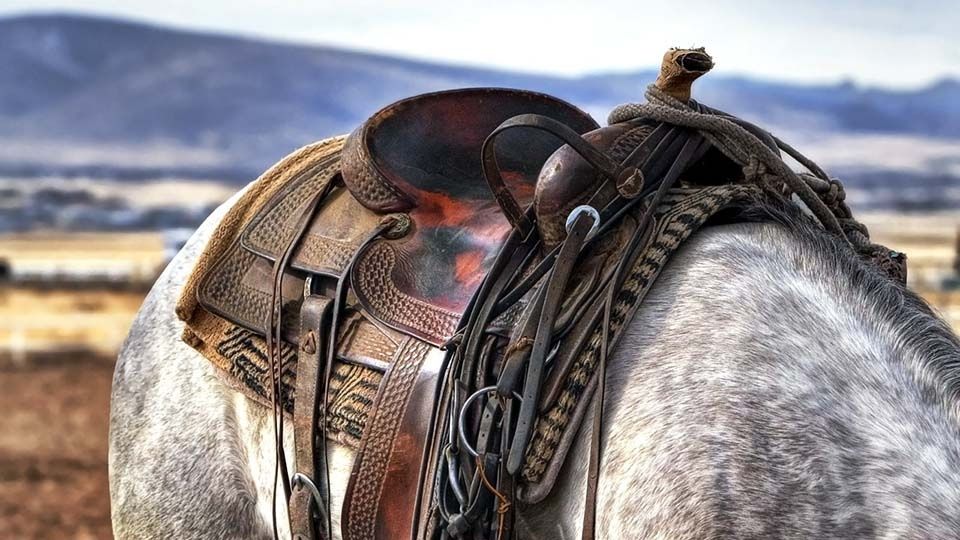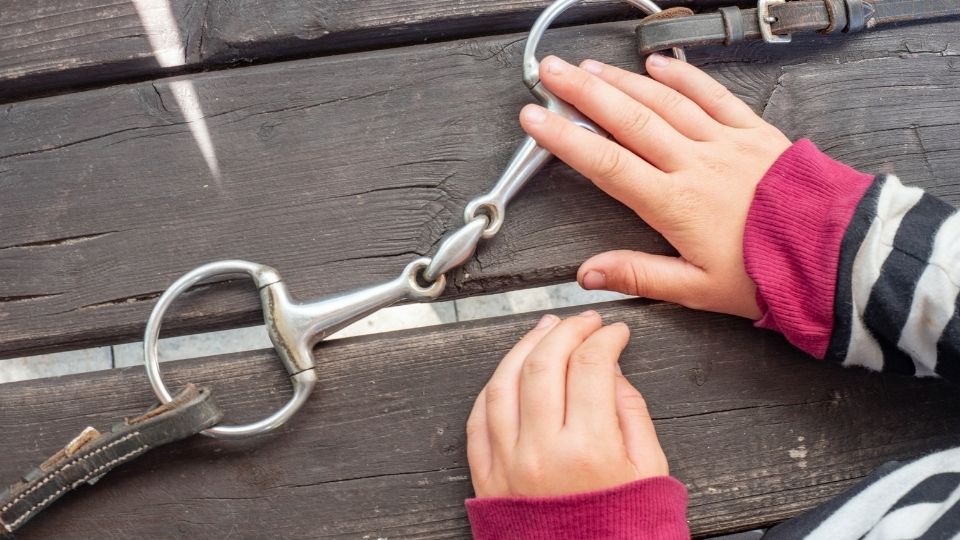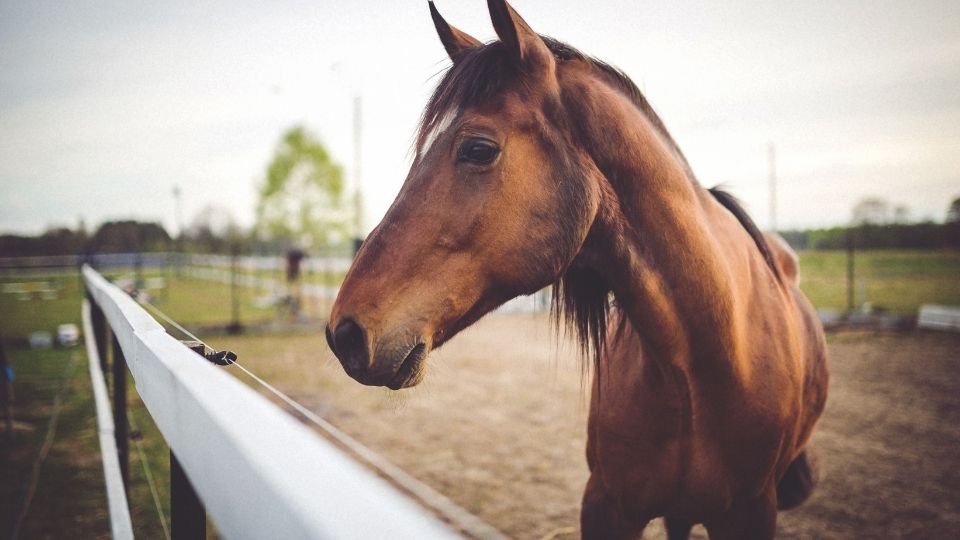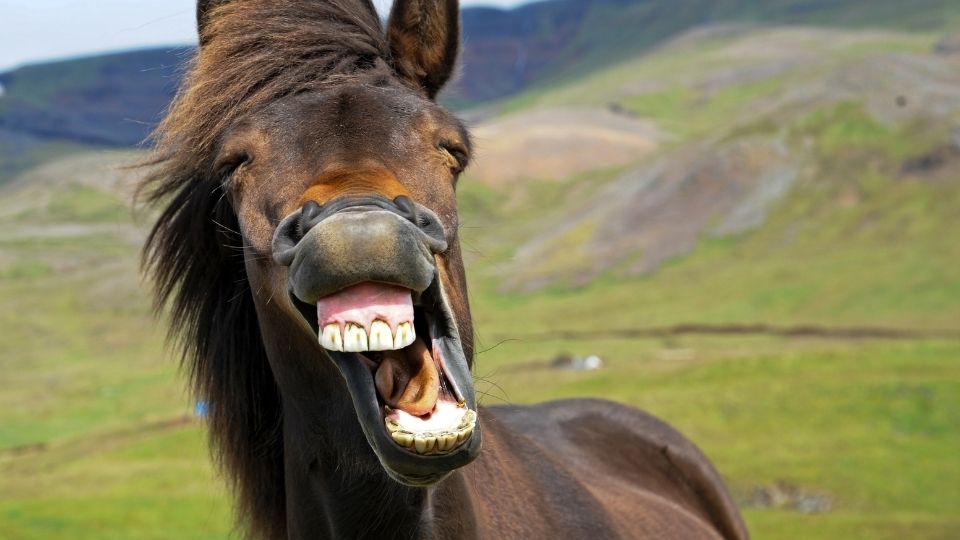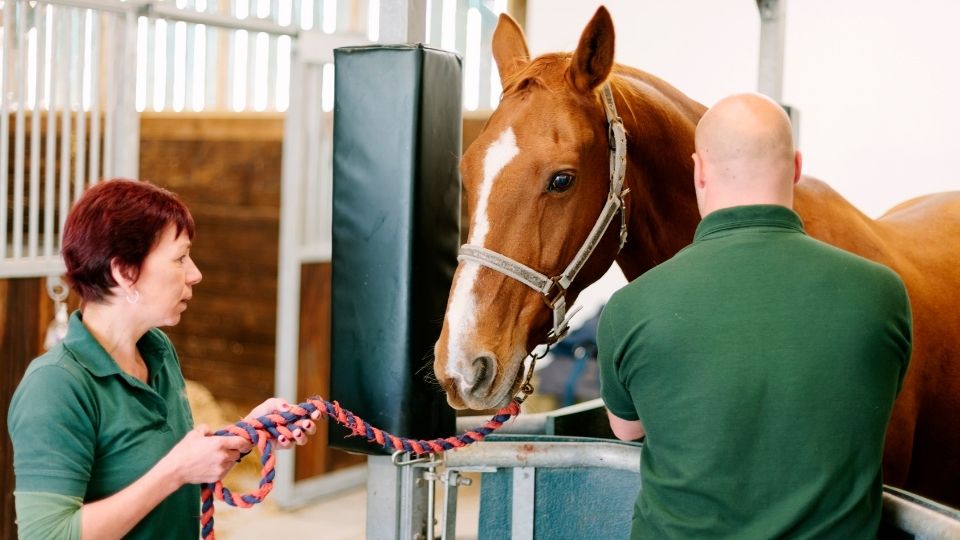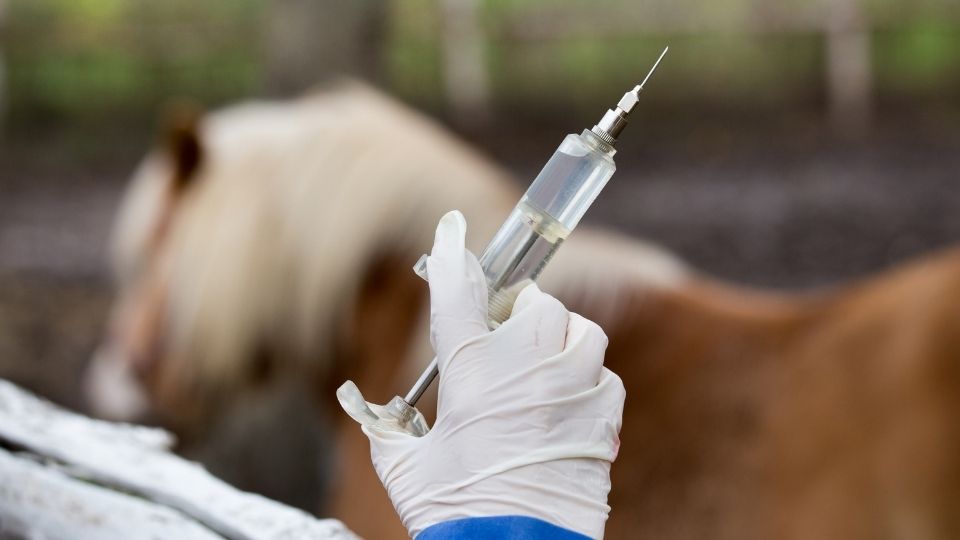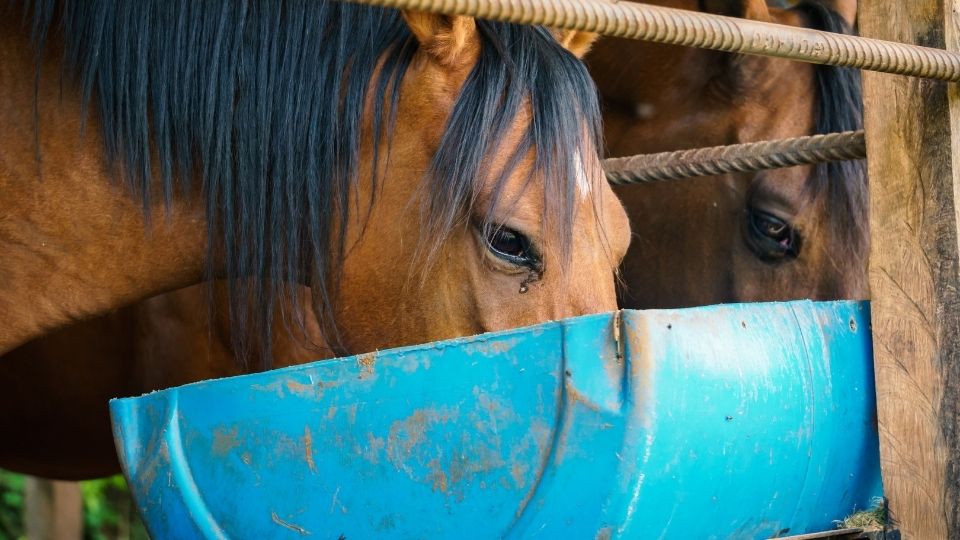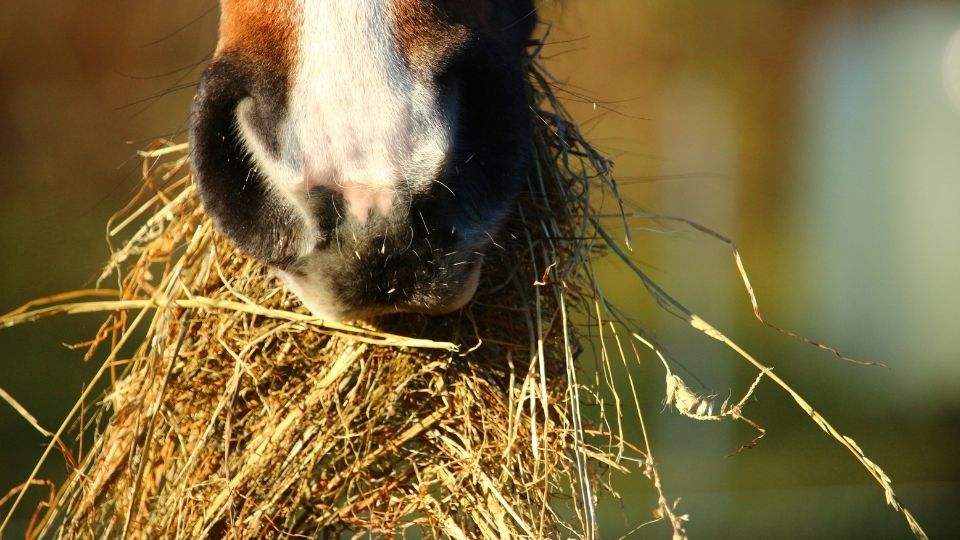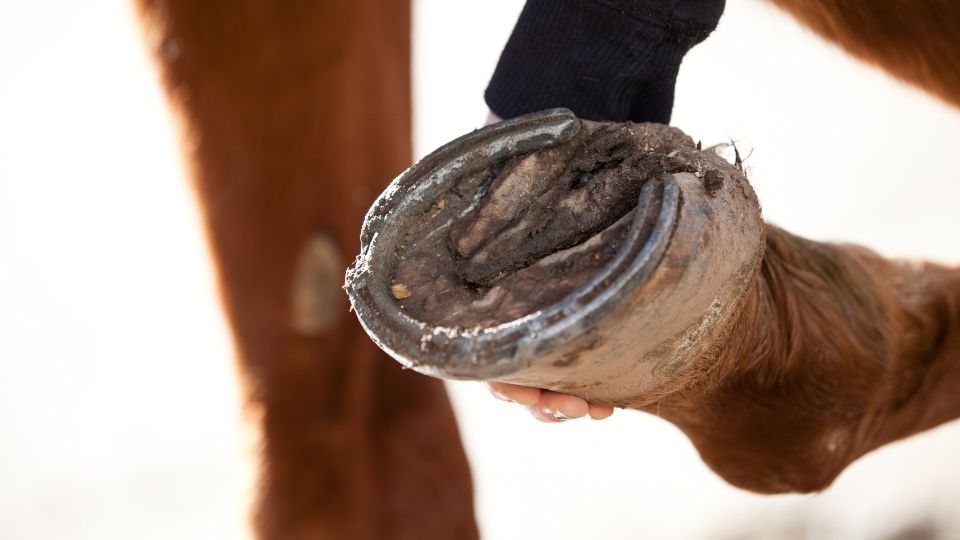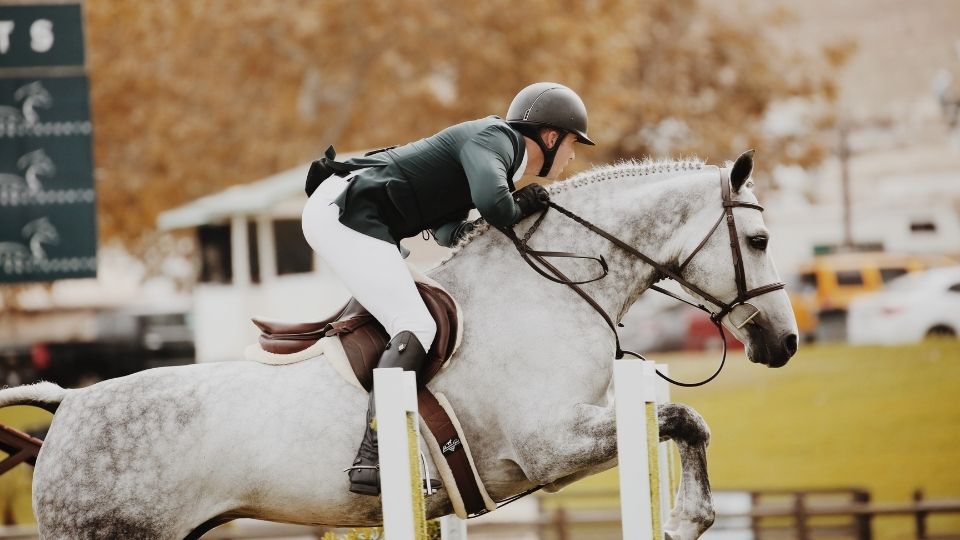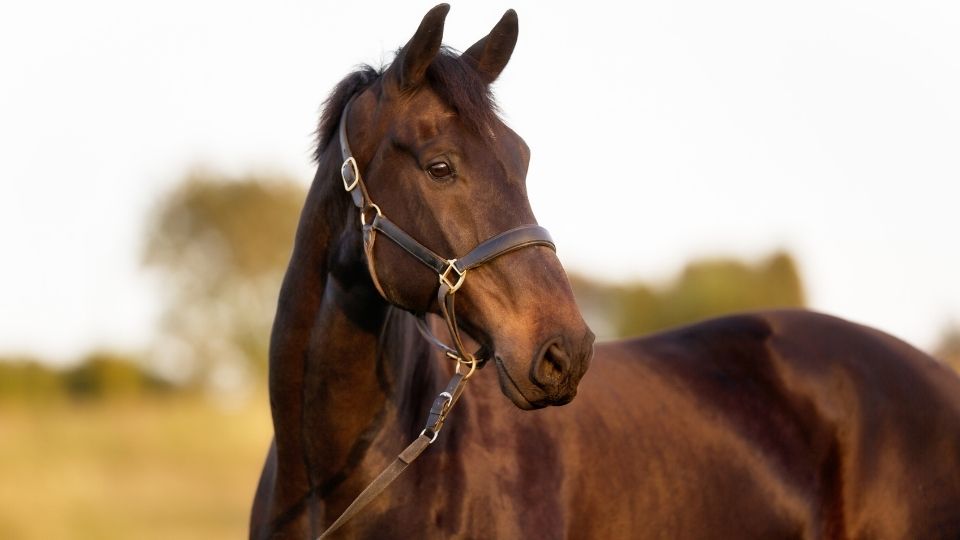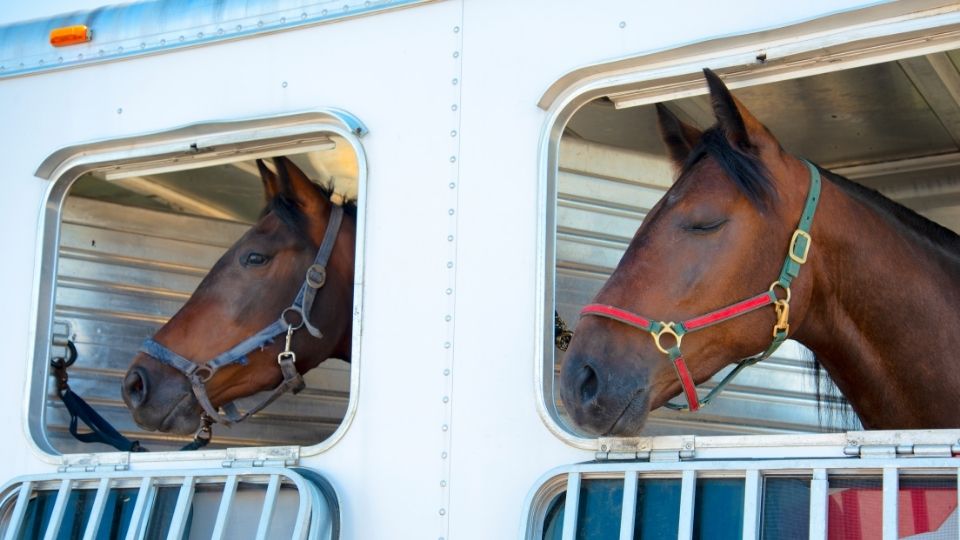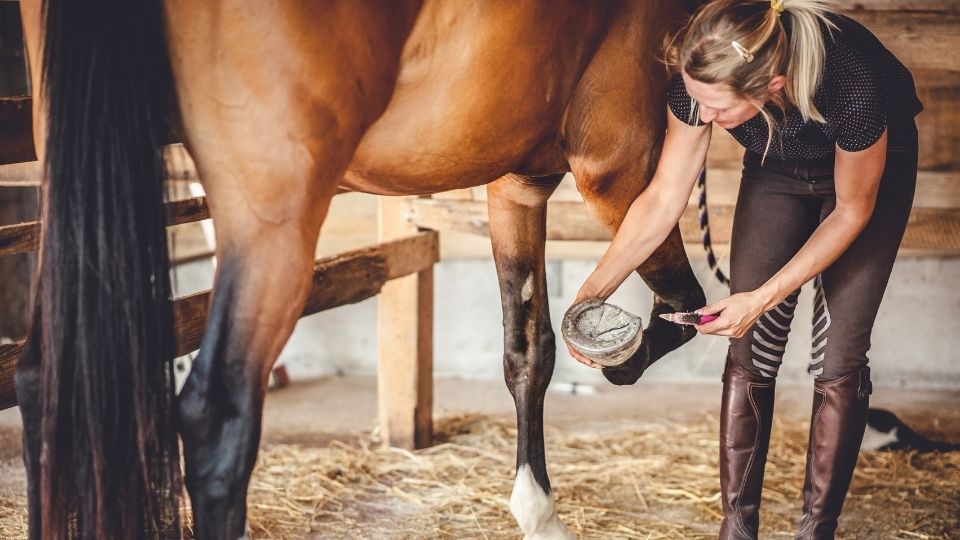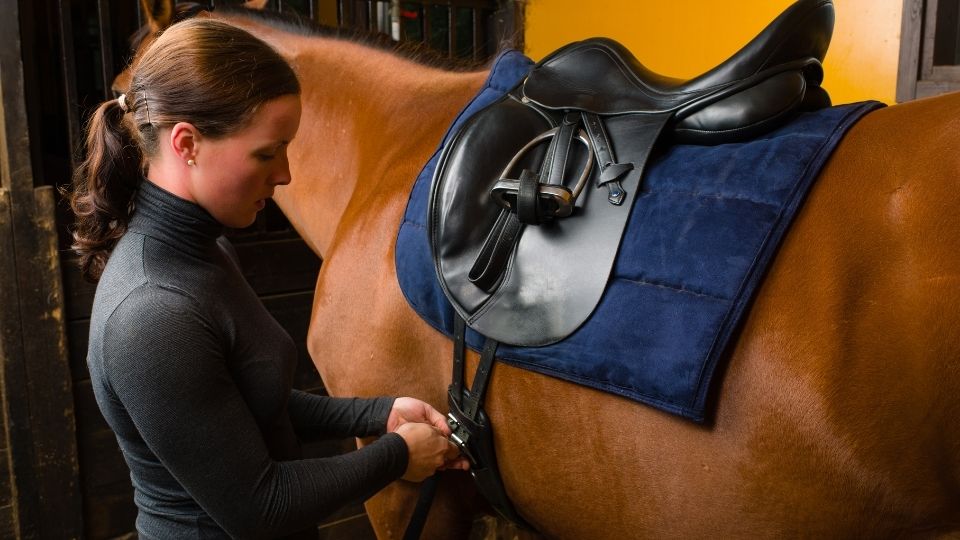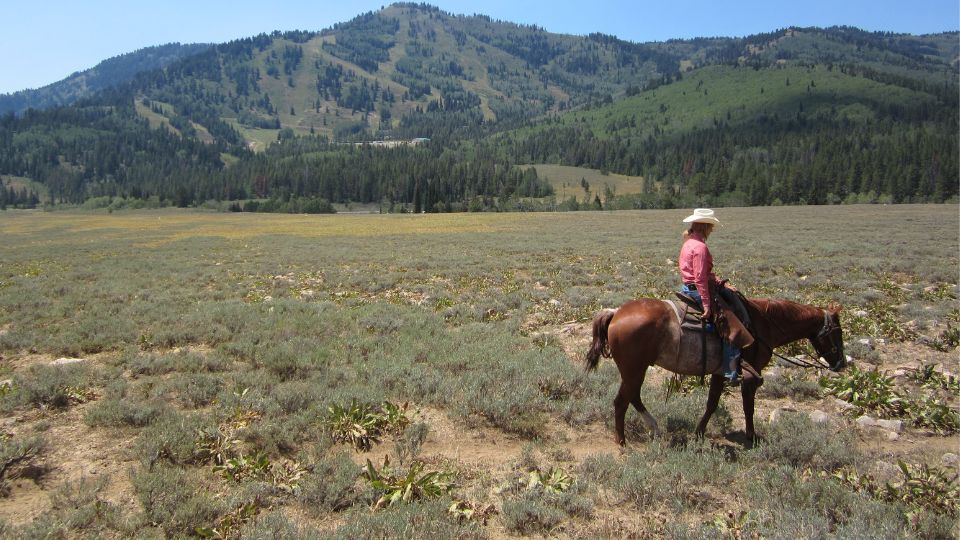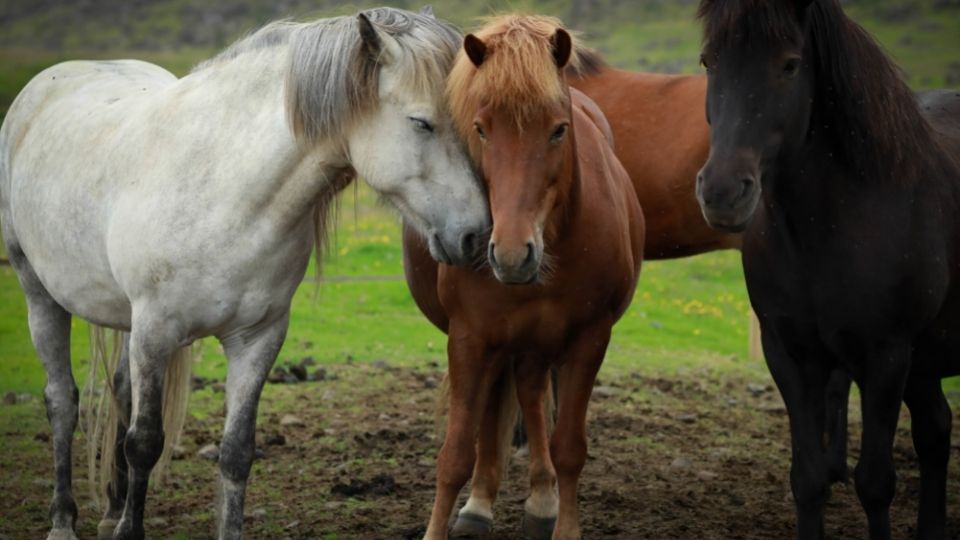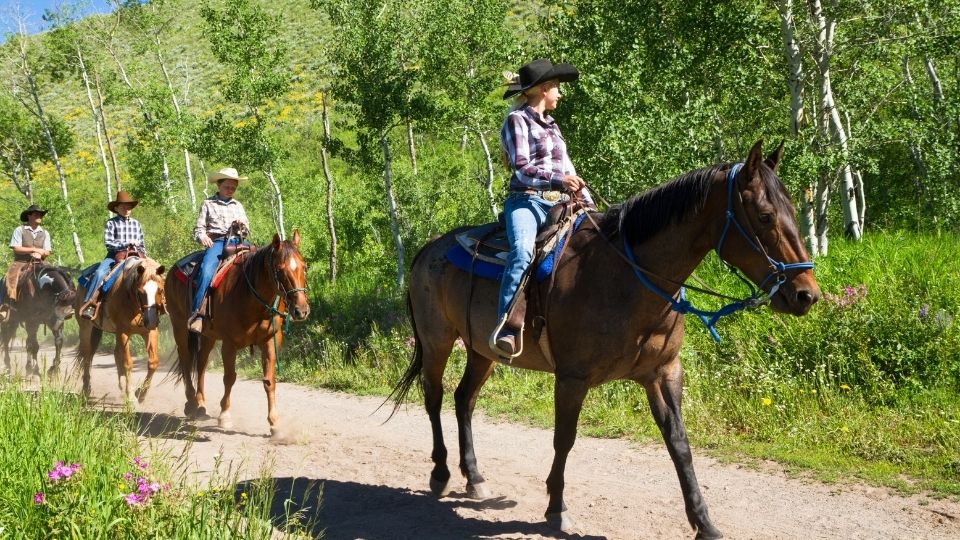Inspecting and Buying a New or Used Saddle
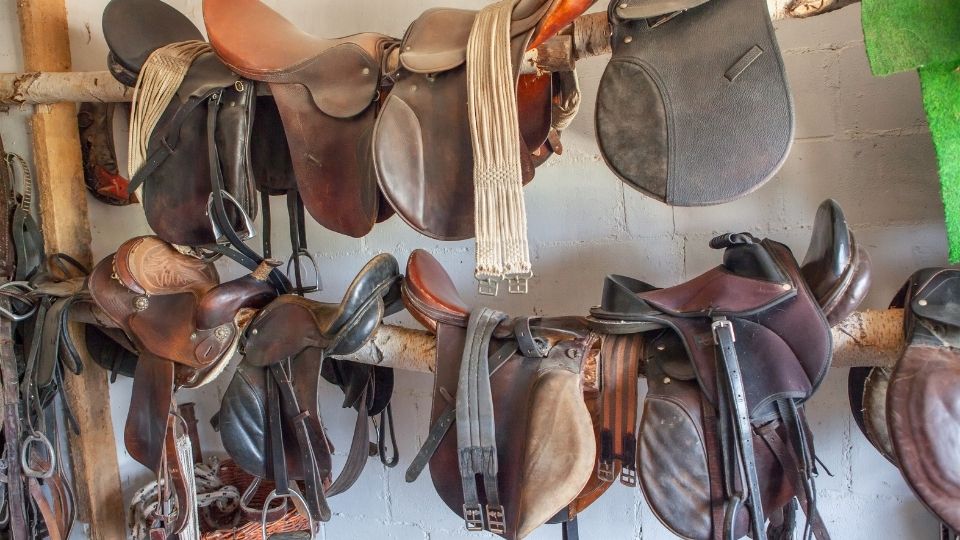
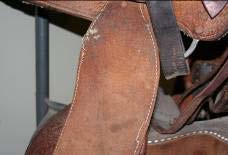
Whether purchasing a new or used saddle, several aspects should be evaluated. To determine if the saddle is sturdy and well-made some aspects to check include the leather, stitching, metal fittings and tree. Discussion of saddle fit to horse or rider are discussed in detail in “Fitting the Western or English Saddle to the Horse” (AG/Equine/2008-05pr) and “Selecting a Saddle to Fit the Rider” (AG/Equine/2008-06pr).
The leather and stitching of the saddle will indicate a lot about the quality. The leather should be supple but firm and have substantial thickness. The leather should have uniform thickness throughout and when bent it should give favorably and show no cracks or bubbles. A used saddle may have areas of leather that are worn and these should be carefully evaluated. The underside of the leather should be smooth, with no loose, rough fibers visible. The stitching on the leather should be tight and even in its path. If the stitching varies in its width from the edge or varies in length of stitch it could be an indication of mediocre workmanship. Loose stitching or torn stitching will need to be repaired to prevent further damage (Figure 1).
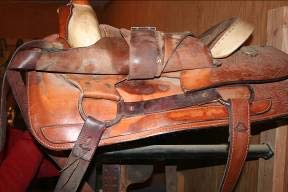
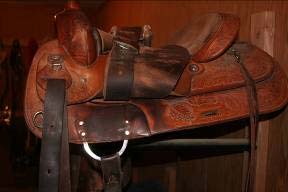
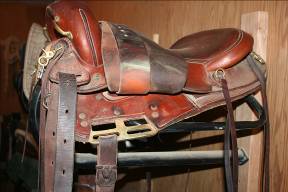
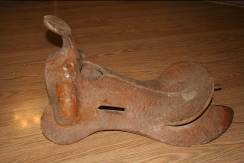
The metal fittings are typically made of stainless steel or brass which are hard metals and hold up well under pressure. Evaluate how the metal fittings attach to the saddle. Fittings attached by leather strapping directly to the tree (Figure 2a) should hold up under serious stress and last longer. If on the other hand, the fittings are sewn in or held in by metal buttons (Figure 2b) to the skirt may give out under strenuous use. The skirt attachment allows for less leather beneath the rider’s leg, which can provide for greater feel and contact.
The saddle in Figure 3 allows for the girth attachment in more than one way. This can allow for setting the girth very close to or farther away from the horse’s elbow. With a horse that is used heavily on trails with a lot of up and down hill work, moving the girth away from the elbow can be more comfortable for the horse.
Last but not least, check the tree (Figure 4) of the saddle. This can be difficult as it is covered by leather and padding, but it is a very important area to evaluate. The tree is the skeleton of the saddle, giving the saddle its form. It supports the rider’s weight and distributes that weight evenly over the horse’s back. Any weakness here can compromise the entire saddle causing the horse serious discomfort. Trees are made from several materials, including wood, fiberglass, and fiberglass covered injected molding.
Especially when purchasing a used saddle, check to make sure the tree is not broken. A broken tree can do serious damage to the horse’s back and should never be used. To check the tree in a western saddle, place the saddle on the ground resting on the pommel or horn (Figure 5a).
Place both hands on the cantle and push down. This will show a break across the seat. Turn the saddle on its side so that the horn is parallel to the ground (Figure 5b). Place both hands or knee on the side and push hard. This will show a break down the length of the saddle.
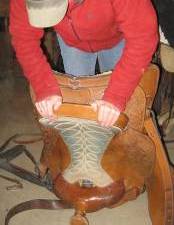

With an English-type saddle, place one hand on each side of the pommel (front of the saddle) and press together (Figure 6a). Then put the pommel against your abdomen (Figure 6b) with one hand on the cantle (rear of saddle) and the other in the middle of the seat. Pull the cantle forward and push down on the seat, there should not be any give. Both hands can also be placed on the cantle alternately pulling one side then the other forward. English saddles can have one of two types of trees. A fixed or rigid tree does not allow any motion in the tree. A spring tree allows slight movement to follow the motion of horse and rider, but the movement should be slight and equal from side to side. See Figures 6a & b.
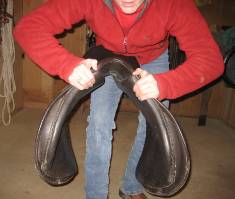
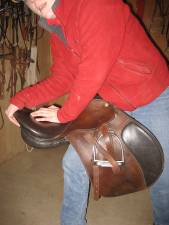
Summary
Always keep in mind that the saddle purchased should last for years and it should contribute to the comfort of both horse and rider. Once you have gone through the evaluations above always check for fit to the horse and rider before purchasing. Buying the first saddle seen without checking it over for quality of workmanship and its ability to do the job can lead to dissatisfaction.
Taking just a little time to evaluate the saddle can help you be comfortable with the purchase knowing that there are no hidden problems.
Published July 2008
Utah State University Extension
Peer-reviewed fact sheet
References
- Beatie, R.H. 1981. Saddles. University of Oklahoma Press, Norman, Publishing Division of the University.
- Parker, R. 2003. Equine Science. 2nd Ed. New York: Delmar Learning.
Authors
Dr. Patricia A. Evans, Extension Equine Specialist, Utah State University; Dr. Rusty Miller, Equine Education and Research, North Carolina A&T University; Rebecca Lewis, Lecturer, Utah State University
Related Research


